The Power of Pollinators
By Tom Castronovo Executive Editor/Publisher Gardener News

The monarch butterfly (Danaus plexippus) is among the most recognized pollinator butterflies in North America.
Pollination is the transfer of pollen to the stigma from stamens of the same or a different flower. An extremely large percentage of the world’s flowering plants require a pollinator to reproduce.
As monarchs forage and flutter for nectar, they move pollen within and between flowers. This movement of pollen helps flowering plants produce seeds, which can eventually disperse and grow into more flowering plants.
The flowers they choose are varieties that are brightly colored, grow in clusters, stay open during the day, and have flat surfaces that serve as landing pads for them.
I found this beautiful monarch butterfly on a Mexican sunflower. These plants yield dozens of showy daisy-like blooms with petals in fiery shades of red, orange, or yellow, all with yellow centers. The tall, nectarrich, shallow blossoms of the Mexican sunflower bring butterflies (Cont. on Page 25)


June 2023 No. 242 Read the Gardener News Online at GardenerNews.com Gardener
Proudly Serving the Agricultural, Gardening, Landscaping & Nursery Communities TAKE ONE
News Gardener News
Tom Castronovo/Photo
A Female Monarch Butterfly Visits a Mexican Sunflower (Tithonia rotundifolia) in Warren County, NJ.


GardenerNews.com 2 June 2023 All Purpose Houseplant Food Succulent & Cactus Plant Food Orchid Plant Food African Violet & Blooming Plant Food
Around The Garden
By Tom Castronovo Gardener News


Praise and Appreciation
The celebrations continue in 2023.
Congratulations are in order for my good friend Bert Kuhn. He has been named president of the New Jersey Chapter of the International Society of Arboriculture (NJISA). Bert is a New Jersey Licensed Tree Expert and is a founding partner of Action Tree Service (NJTC768009) in Watchung, Somerset County, NJ. My Dad really loved Bert when he went over to his house to talk about trees. Bert’s knowledge of arboriculture is incredible. He knows all aspects of growing trees, maintaining them, identifying them, planting trees for their ornamental value, and removing trees.

The NJISA was founded in 1974. In 2001, the merger of the Arborists Association of NJ (AANJ) and the NJISA created a more unified industry leader in the field of arboriculture, the New Jersey Arborists, Chapter of the ISA (NJAISA). There are currently over six hundred members in the chapter including commercial, consulting, municipal, and utility arborists, researchers and educators, horticulturists, and individuals interested in the proper and professional care of trees and landscapes.
The NJ Chapter of the ISA is preparing to host its annual Tree Climbing Competition, which will once again be held at Branch Brook Park in Newark, NJ. The event will start on Friday, June 9 with Gear Check and Ascent from 12pm - 5pm. Saturday, June 10 will begin with a walk-through promptly at 7:30am. Please plan to arrive by 7:00am on Saturday: the competition events will begin no later than 8:30am. I can’t wait to attend this event. The male and female winners of the masters’ challenge event on June 10 will qualify for the International Tree Climbing Competition in Albuquerque, NM on August 11-13.

Barlow’s on Sea Girt Avenue in Sea Girt, Monmouth County, New Jersey is celebrating their 40th anniversary this year.


Barlow’s is an historic family homestead and horticultural business that was purchased in 1983 by Stephen and Leslie Barlow. The original Barlow Flower Farm consisted of a farmhouse built in 1807, one retail greenhouse, ten small growing greenhouses, a retail shop that was formerly used for produce sales, and a garage for production. Early expansion emphasized improving the growing facilities. As sales grew, existing facilities were moved or converted to increase both indoor and outdoor retail space, and each year saw new production greenhouses erected.
During the fall of 2004, Barlow Flower Farm became Barlow’s and went through a renovation of the retail facility. The two original retail greenhouse structures were removed and replaced by a 10,000 sq. ft. European glass greenhouse. Along with the retail renovation, Barlow’s increased the number of growing greenhouses to 28 and the outdoor growing area to 1.5 acres.
Barlow’s is committed to providing customers with the finest quality products and superior customer service from a knowledgeable and well-trained staff. Specializing in propagating seeds and cuttings, Barlow’s
produces up to 70% of its plants that are sold and used by the company throughout the year, and continues to be one of New Jersey’s largest retail annual growers. Stephen and Leslie continue their involvement in the business, and have been joined by Stephen Barlow III, their son, who is the President of Operations and general manager.
Bardy Farms & Greenhouses is celebrating 40 years in business at their Washington Valley Road, Warren Township, Somerset County, New Jersey location.
The Bardy Family history in America started when Abraham Bardy emigrated from Russia in 1904. He was a poor farmer who started vegetable farming in Union, Union County, New Jersey. In 1905, he sent for his wife, Gussie, and five year old son, Jack, both of whom were still in Russia. Abraham and Gussie had eight children together: Jack, Edward, Joseph, Philip, Ida, Florence, Anna and Bertha. The brothers and sisters all worked the farm. The vegetables, eggs and butter that they produced were sold in the Elizabeth Market on High Street in Union, Union County.
Years later they had a small roadside stand on Morris Avenue, Union, Union County. That stand developed into their first little grocery store. That store was located where the Majestic Cleaners store is today. In 1952, the brothers built their first supermarket.
Bardy Farms Supermarket was the most modern and progressive market of its time in the country. The store had frozen food, a bakery department, deli, and a butcher shop on site, fresh seafood department, and of course a produce department featuring their very own produce, most of which was grown just two blocks away on Spruce Street in Union, Union County where their 40-acre vegetable farm was located.
In the late 1950′s, due to the success of the supermarket, the family purchased farm land in Basking Ridge, Somerset County; Millington, Morris County: North Plainfield, and Warren Township in Somerset County, New Jersey. The 30-acre farm on Route 22 East in North Plainfield was to become the site of the next Bardy Farms Supermarket, but was instead longterm leased to Great Eastern and is presently the site of a new Costco. The Warren site became the location of the next supermarket and shopping center. The Bardy Farms Country Square of Warren Township was built in 1960. The 130-acre Millington farm was donated in 1998 to the Great Swamp National Wildlife Refuge, one of more than 550 refuges in the National Wildlife Refuge System. The refuge is managed by the federal United States Fish and Wildlife Service, an agency within the United States Department of the Interior. The Basking Ridge farm was developed and is the present site of the Barons Condominium Association.
Today, Philip’s son, Rob, operates Bardy Farms & Greenhouses. Rob, a graduate of Fairleigh Dickinson University, is the last family member still farming after all these years.
Complimentary copies of Gardener News can be found at both of these fine businesses, and many more!
Editor’s Note: Tom Castronovo is executive editor and publisher of Gardener News. Tom’s lifelong interest in gardening and passion for agriculture, environmental stewardship, gardening and landscaping, led to the founding of the Gardener News, which germinated in April 2003 and continues to bloom today. He is also dedicated to providing inspiration, and education to the agricultural, gardening, landscaping and nursery communities through this newspaper and GardenerNews.com.

GardenerNews.com June 2023 3
Celebrate Father’s Day with us! Celebrate Mother’s Day with us! *Award Winning Wine List* Seafood, Steaks, Pasta. Are Our Specialties Daily Lunch & Dinner Specials Family Style Meals To-Go Curbside Pickup and Takeout
I am writing this column for the last time in my position as Secretary of Agriculture for the state of New Jersey and, I must admit, I never fully contemplated the day I would retire from this post. I’ve always loved doing the work in agriculture and appreciated the people I’ve met along the way – our fabulous farmers and my associates in our Department of Agriculture.

Leaving now just seemed like the right time. As with all of nature, there is a season and a time for change and even growth. So, as I prepare to move into the next phase of life, it’s fitting to look back on how my role as Secretary brought me to these pages, and to thank those who were integral in that journey.
First, I want to thank Tom Castronovo for inviting me over these past years to share my thoughts and experiences about all aspects of the involvement we all share with plants, gardens, and agriculture in general.
This publication, celebrating its 20th year, is an extraordinary vehicle for readers to be educated and enlightened on any number of interests connected in various fashions. Along with my cohorts who write in each issue, there is real wisdom, heartfelt emotion, and factual information combined into this green tabloid that really makes Gardener News unique in the industry.
Looking back over the years, I recall so many topics, from farm-toschool, gardening during the COVID-19 pandemic,
NJ Dept. of Agriculture
By Douglas H. Fisher Secretary of Agriculture
Till We Meet Again
agritourism, Jersey Fresh and Jersey Grown. I think each piece that has been written could clearly have an update or refresher on how we fared in making progress while moving forward.
After all, everything changes and so incredibly fast. I recall in my column of February 2017, “Yet Still Not Flying Cars,” commenting on drones, vertical farming, and mini-satellites, which all seemed so futuristic then. Now, six years later, these are commonplace.
That seems to be the price of technological innovation – the incredible pace of our lives. Whatever I point to in the next few words will almost be outdated to a degree because, by virtue of it being known to us, it means we most assuredly have moved on to the next object or idea to ensnare our collective imagination. Think AI /AR (artificial intelligence and altered reality) and the speed of change is almost incalculable.
But while so much is evolving, there are some human elements that withstand the pull of technology and remain
inherently, instinctually, and forever bound in the human condition.
A computer cannot love or respect or honor as we do. Machines can do the work without pausing or stopping, but they can never do any more than that. To be able to sit, admire, and enjoy the glow of flowers, the chirping of birds, and the ratcheting sounds of insects. These are the joys of living in nature.
I’ve written articles on “The Allure of Trees,” produce diversity, garden clubbing, county fairs, the tomato, and the peach. It brings to mind the admonition that there is “so much to do” in Dr. Seuss’ book, “Oh the Places You’ll Go.”
Moving ahead, I would like to spread a little ink on what I have pushed for over these years on the farm front, and why I hope these efforts will continue.
Not only growing systems from the production side, but just as importantly, or maybe more importantly, ideas for the marketing of our production to meet the wants and needs of the consuming public with less waste and
more equity.
All forms of production – conventional or traditional, organic, regenerative, hydroponic, aeroponic, permaculture, etc. – must be looked at and developed by the agricultural community. However, stopping progress and just doing things the same way all the time sounds good as a story line, but it does not translate to the bottom line. In the field of farming, as in any industry, we must always have the collective stamina to embrace and even celebrate change.
On another front, we not only must continue to preserve farmland, we also need to protect prime soils, because once destroyed they are almost impossible to restore in any economically feasible manner.
New Jersey is uniquely positioned geographically, demographically, and climatologically. If we adjust appropriately, just as we have pivoted in the past, farming will thrive and prosper because we are a state of many firsts, known for our diversity and talent that drive innovation, and that’s what
moves us forward.
But we must always be mindful that we can lose our agriculture county by county if we don’t defend our inherent right to have it.
Lastly, as I leave, I want to mention the talented people within the New Jersey Department of Agriculture with whom I have worked since my days in the Legislature and then since I arrived here.
They are dedicated and have provided the Secretary the depth of bench to make things happen that are too numerous to mention here.
Just know, we are there for consumers, producers, purveyors, distributors, and the general public interacting each and every day.
I will be moving on but not out. New Jersey is my home and I plan to stay involved and engaged. Thank you all for the privilege of engaging with you, the Gardener News readers, these past several years. Be Well and Be Gardening.
Editor’s Note: Douglas
H. Fisher is New Jersey’s Secretary of Agriculture. He is the department’s executive officer, secretary to the State Board of Agriculture and a member of the Governor’s cabinet. Secretary Fisher fulfills executive, management and administrative duties prescribed by law, executive order or gubernatorial direction. He can be reached at 609.292.3976. For more info, please visit: http:// www.state.nj.us/agriculture
ECHO Incorporated Announces New President and CEO
ECHO Incorporated, a leading manufacturer of high-performance outdoor power equipment for commercial and homeowner use, today announced the appointment of Harold Redman as its new president and CEO effective April 3.
Harold brings more than 30 years of outdoor power equipment experience and a proven track record of executive and organizational leadership, strategic green
industry vision and product innovation to ECHO.
Harold began his career with General Power Equipment, a division of True Value Hardware. He then joined Simplicity Manufacturing for nine years before his tenure at Briggs & Stratton, where he served as President of the Home Power Products business for four years and President of the Turf & Consumer Products
business from 2010 to 2022. “ECHO is a wellrespected company with a reputation of offering great products and customer care, and I’m honored to lead a company rich in innovation and legacy. As our industry continues to change with new technologies, I look forward to working with this exceptional team of talented and passionate ECHO employees to bring new products and services
to the green industry,” said Redman.
Harold succeeds Tim Dorsey, who is retiring after 27 years from ECHO serving in various roles, most recently as president for the last nine years. Tim will continue to serve as a Global Operating Officer of Yamabiko and a board member for ECHO and Yamabiko Europe.
“While I’m excited to move to the next chapter, I
also have a heavy heart as my time at ECHO has been the most rewarding of my career and I cannot express my gratitude enough. However, it’s safe to say that ECHO is in great hands with Harold, who is a driven, humble leader that demonstrates strong leadership through a hands-on management style and engagement with employees and customers,” said Dorsey.
GardenerNews.com 4 June 2023

GardenerNews.com June 2023 5
Spotted lanternfly is a serious invasive pest with a healthy appetite for our plants and it can be a significant nuisance, affecting the quality of life and enjoyment of the outdoors. The spotted lanternfly uses its piercing-sucking mouthpart to feed on sap from over 70 different plant species. It has a strong preference for economically important plants and the feeding damage significantly stresses the plants which can lead to decreased health and potentially death. While it does not harm humans or animals, it can reduce the quality of life for people living in heavily infested areas.
For more information visit https://www.nj.gov/agriculture/divisions/pi/prog/pests-diseases/spotted-lanternfly/








GardenerNews.com 6 June 2023 Scrape egg massess into a container of rubbing alcohol or hand sanitizer Squash any bugs you see any sightings Egg mass Sept.-June Early nymph April-July Late nymph July-Sept. Adult July-Dec. CHECK YOUR VEHICLE SCRAPE. SQUASH. REPORT. STOP THE SPREAD OF THE SPOTTED LANTERNFLY. JOIN THE BATTLE. BEAT THE BUG. Search for all spotted lanternfly life stages For Reporting and More Information in New Jersey www.badbug.nj.gov










GardenerNews.com June 2023 7 Espoma. A natural in the garden since 1929. Watch your garden bloom and grow with all natural soil mixes and fertilizers from Espoma Organic ® , the leader in organic gardening for over 90 years. www.espoma.com the #1 brand in organic gardening GARDEN CENTER AND FARM MARKET 96 River Road Montville, NJ 07045 973-263-8814 SERVING YOUR GARDENING NEEDS FOR 6 GENERATIONS OUR EXPERIENCED STAFF CAN ANSWER YOUR GARDENING QUESTIONS AND PROVIDE GROWING TIPS Wholesale & Retail Bird Seed Fertilizers Pottery Garden Accessories • Gift Cards • Stone - MulchSoil Bagged & Bulk Mon. - Sat. 7-7 Sunday 7-5 WE SPEAK SPANISH As a Family Owned Business we’re Dedicated to Providiing the Personal Service and Expertise that’s too often Missing in the Big Box Stores SHOPOURCENTERGARDEN30ACRE • Annuals • Perennials • Trees & Shrubs • Ground Covers • Rose Bushes • Herbs • Vegetable Plants Father’sJuneDay18th Don’tForget Dad HOUSEPLANT HERO









GardenerNews.com 8 June 2023 Store Hours: Mon - Fri 7am - 6pm Sat & Sun 7am - 5pm
Family Owned Retail Garden Center for over 40 years!
That’s a good question, and there are a host of things we need to talk about as summer fast approaches. Everyone’s lawn is a unique situation, but there are also a lot of similarities, so we can cover several possibilities and one or more will pertain to your lawn.
Do you remember your lawn stressing out in the past from heat and drought? Of course you do. That means it’s time to raise your mowing height during summer months. Three or more inches mowing height is best to preserve the moisture in your grass blades. Yes, your lawn is mostly “water” and if you cut it too short, summer heat and drought may take it out.
What about watering?
We’ve talked about supplemental watering to your lawn a lot over the years. Hopefully, you did not turn on your irrigation or sprinkler too early this year. Usually drought stress does not become a factor until early summer. During the growing season of March to November, your lawn needs
Hello Gardener News Readers!
As we all know, with new technologies and better practices, the agricultural industry is ever changing. Here at Farm Service Agency (FSA) we are also changing to make sure we keep up with the needs of the industry and our farmers. During the pandemic we saw the decline of our supply chains which made it difficult or impossible to find fresh produce and meats in our grocery stores.
Recently, USDA created an Urban Agriculture Pilot Program which tasks FSA to open offices in urban areas to provide loans, services, and assistance to urban producers. This initiative aims to strengthen our supply chain and increase access to fresh, nutritious produce in food deserts throughout the country.
Urban agriculture is an incredible way to cultivate food right in the heart of our cities. It not only encourages people to get into gardening, it also helps build self-sustainability and healthy communities. This concept is becoming increasingly popular as more people recognize the benefits of locally grown produce, reduced food waste, and a more sustainable way of living. Urban agriculture can also play a crucial role in addressing food insecurity in our communities, particularly in areas where access to
Turf ‘s Up
By Todd Pretz Professional Turf Consultant
What do I do next with my lawn?
about one inch per week of water in the absence of rainfall to look its best and survive. Do not allow your lawn to go into a dormant stage turning somewhat brown. Water it.
If you want to save on the water bill, let your lawn grow. Hopefully, you have a great root system and have been following my Turf’s Up articles over the years to help your lawn survive the ravages of summer weather. Just like you like to cool off in the pool, so does your lawn enjoy some cool water.
Have you fertilized only one time this year? If so, you need to apply a gentle summer feeding, perhaps organic lawn food, before July 4. Your lawn will survive much better when it is fertilized,
watered and mowed properly. Please do not over-water your lawn thinking it will make it look even better. Remember, it does not rain every day, and a short daily watering of 10-15 minutes may promote fungus.
Did you have fungus in your lawn in the past?
If so, now is a good time to monitor your lawn for fungus. Perhaps you should apply a fungicide every 30 days during summer months. Be sure to follow all label directions. Remember to use good quality grass seed to reduce summer fungus possibilities.
I bet you are still trying to beat the weeds! Mother Nature is tough, and every year she will take advantage of bare
spots, heat and drought, or perhaps she’ll help you grow a great crop of crabgrass if you are not paying attention. Weeds tend to thrive during summer months when your lawn starts to suffer from all of the potential problems we have outlined above. Be careful applying weed controls when temperatures are over 85 degrees, as it can damage your lawn. Follow all label directions for best results. Be sure to determine whether you are trying to kill broadleaf weeds or grassy weeds. How do you know the difference? Broadleaf weeds tend to have some sort of flower, and grassy weeds look like grasses without any sign of flowers. These two categories of weeds
USDA Farm Service Agency
By Bob Andrzejczak State Executive Director

The Future of Urban Ag in NJ
fresh, healthy food is limited.
The FSA Urban Agriculture Pilot Program seeks to partner with urban producers to help them grow and be successful by expanding and opening urban agriculture offices. Through this program, we are looking to provide resources, technical assistance, and financing to support urban agriculture projects. We are committed to working with urban farmers to ensure they have the tools and resources they need to succeed.
Other states that are part of the Urban Agriculture Pilot Program have already opened offices and have seen great interest and success. We are excited to bring this program to New Jersey and make a difference in our communities in the near future.
In addition to addressing food insecurity and land access,
urban agriculture can also provide economic benefits to communities. By creating local jobs and stimulating local economies, urban agriculture can help revitalize communities and create new opportunities for residents.
In Detroit, urban agriculture has created around $711,000 in annual revenue for the city. By providing employment opportunities, urban agriculture is preserving inner-city residents’ access to resources that would otherwise be lost.
As the NJ State Executive Director for FSA, I am committed to supporting urban agriculture and helping to build a more sustainable, resilient food system in New Jersey. I encourage anyone interested in urban agriculture to reach out to our team and learn more about how we can help. For more information on USDA Urban Agriculture
are controlled by different methods and chemicals.
Grubs are becoming active this time of year. Their life cycle has them starting to come up to the surface from deep in the soil, and changing to adult beetles. If you have had a past history of grubs in your lawn, now is a good time to address them with an application. Follow label directions and water in any products to get the active ingredient to the subsoil level. A healthy growing lawn can survive a few grubs per square foot of lawn area. If you suspect grubs in your lawn, get a rake out and pull back the grass in damaged areas to monitor them. That’s a long enough list for this month. Enjoy your summer with family and friends.
Editor’s Note: Todd Pretz is Vice President of Jonathan Green, a leading supplier of lawn and garden products in the northeast. For more information, please visit: www.jonathangreen.com

initiatives, visit farmers.gov or reach out to your local county FSA office. Our team is always happy to answer your questions and help.
In closing, I want to emphasize the importance of supporting our agricultural community, both urban and rural. We are all in this together, and we must work together to ensure the success of our farmers and the vitality of our communities. At FSA, we are here to help, and we encourage you to take advantage of our programs and resources to support your farm or agricultural project. Together, we can build a better future for agriculture in New Jersey.
Acreage Reporting and NASS Ag Census Reminder
Participating in Acreage Reporting and the National Agricultural Statistics Service
(NASS) Agriculture Census is an
important way for farmers to help themselves and their fellow farmers. By providing accurate information about their acreage, production, and other farming activities, farmers can ensure that Washington has the most up-to-date information to make informed decisions about agricultural programs and funding. This data is used to determine eligibility for programs such as crop insurance, conservation programs, and other agricultural assistance. By participating in Acreage Reporting and the Agriculture Census, farmers are helping to bring additional program resources and funding to New Jersey’s agricultural community. The Acreage Reporting deadline for soybeans, corn and other spring-planted feed grains, perennial forage, CRP, hemp and most other crops is July 15, 2023.
Editor’s Note: Bob Andrzejczak is the State Executive Director of the USDA Farm Service Agency (FSA) in New Jersey. He can also be reached at 609587-0104 during regular business hours. For more information, please visit https://www.fsa.usda.gov/ state-offices/New-Jersey/ sed-biography/index
GardenerNews.com June 2023 9
Green is a color most people do not often consider for the theme of a garden. It is a color found in few flowers, yet it clearly abounds through foliage. In fact, blending together plants with foliage of different sizes and shapes can create a textural garden with wonderful outcomes. Ferns are a great group of plants for such gardens. With its intricate and delicate beauty, one of my favorites for a ‘green garden’ is the Northern Maidenhair Fern, botanically known as Adiantum pedatum.
Adiantum is a large genus, with upwards of 220-250 species. The genus is thought to have evolved less than 100 Million Years Ago (MYA), making it modern as far as ferns are concerned. Despite its ‘youth’, Adiantum pedatum has an impressive native range stretching from the eastern regions of North America to the temperate regions of Eastern Asia and the Himalayas. Traditionally, it is placed in the Brake Fern family, or Pteridaceae, but some authorities have placed it in its own family of Adiantaceae. Both the genus and species name were penned in 1753 by the Swedish botanist, Carl Linnaeus (17071778). The genus name comes from the Greek A, meaning not
Each year, the New Jersey Landscape Contractors Association (NJLCA) chooses a service project in an effort to give back to the community, and to increase recognition of our members and the use of quality landscape professionals. This year, the association chose Bergen Community College (BCC) in Paramus, NJ as the site of its 2023 Service Project.
Generally, the project is aimed at helping schools, non-profits and/ or causes close to our hearts. In past years, we have restored wetlands for endangered birds, created outdoor classrooms and greenhouses for schools, rehabilitated the grounds of a Boy Scout camp, assisted in setting up an urban farm, and much more. Project values have ranged from $15,000 to over $100,000 between donated materials and labor. Volunteers and donors come from our giving and generous membership, willing to provide materials, skilled and unskilled labor, and even meals! In return, these wonderful people get the satisfaction and joy of seeing their work make someone’s life better!
The 2023 project entailed the creation of a seating area, planter beds, and a wheelchair-accessible walkway to a gazebo opposite the BCC greenhouse and horticulture
Morris County Park Commission
By Bruce Crawford Horticultural Manager
A Maiden for the Green Garden
or without and Diantos meaning wettable. Together, they mean not wettable and describe how the leaves appear dry after a rain. The species name comes from the Latin Pedātus, meaning with feet. Supposedly the two to nine individual leaflets or pinna that radiate from the horseshoeshaped stem resemble the shape of a bird’s foot.
From the very start of spring, Northern Maidenhair Fern provides delicate garden attributes with the appearance of its slender pink fiddleheads adorned with a scattering of silvery hairs. As it nears 3-6” tall, the stem divides into what will become two fronds, with each curling backward and creating an overall appearance of a horseshoe. As the fronds continue to grow, the entire stem or rachis transitions from pink
to dark purple, resembling the slender dark hair of a young maiden and hence, the common name!
As the individual leaves or pinnae develop along the curving rachis, they initially hang down, looking for all the world like a series of delicate, dangling earrings. The pinnae become increasingly turgid as they expand and transition from dangling to a horizontal orientation. These pinnae vary in length from 2-7” long, with the longest pinnae found closest to the point where the stem splits into the two fronds and become progressively shorter near the tips of the rachis. Ultimately the plants reach 18-24” tall and over 24” in diameter, with each pinnae developing 8-50+ small individual leaflets called pinnules. Each pinnule is
up to ½” wide and 1” long and bears a strong resemblance to a human foot – possibly another explanation for the species name! The fall color is a bronzy-yellow and the stems quickly collapse following heavy frosts.
Unique to the genus Adiantum, certain pinnules develop into fertile spore-releasing organs called sporophylls. They are marked by the lobes of the pinnules curling down and backwards into a flap that covers the spore releasing sori. These flaps, botanically called indusiums, are challenging to see from above for the uninformed and typically go unnoticed. For the informed, these indusium are relatively easy to spy since the distal or outward facing margin of the pinnules lack the typical dentate leaf margin and the edge
The NJLCA Today
By Gail Woolcott Executive Director

Helping Others Helps Us
program entrance. There were two diseased trees that had to be removed, and upon completion of the hardscape, the entire area needed to be seeded with new grass. The design was created by Dr. Steve Fischer and his landscape class students, and enhanced by NJLCA Service Project Committee Chairman Richard Andreu. The area will serve the entire college by providing space as an outdoor classroom, a place for students to gather and socialize as well as an area for their culinary program to hold outdoor entertainment. Further, it will provide students of the horticulture program with a place to learn, plant, and grow.
Adjacent to the area are gorgeous gardens created by Dr. Fischer and his classes throughout the past four decades. There is a native plant garden, a perennial garden, secret pathways through
the area, and a variety of trees that Dr. Fischer uses to give his students hands-on lessons.
The project included 20 feet of seat wall, a 6-foot planter, and walkways to reach the gazebo. Donors of materials for the project included Cambridge Pavers, Downes Tree Service, Horizon Landscape Co, Mr. C Fence, SiteOne Landscape Supply, Victoria’s Nursery, Viola Brothers, as well as materials from the volunteer companies that provided the employees to help install the project. Volunteers included Al D. Landscaping and Tree Service, Exclusive Stoneworks, Green Meadows Landscaping, Kodiak Landscape & Design, Native Fields Landscaping, Yellow Wagon Landscaping and NJLCA staff. Working in conjunction with the staff and students of Bergen Technical High School’s
has a concave shape.
Adiantum pedatum is a very long-lived fern when properly sited. Typically, it is an uplands plant requiring moisture retentive, yet not boggy, soils high in organic matter. In Warren County NJ, the plants frequently appear along the northern sides of wooded hillsides. Plants are adaptable to soil pH, although they thrive best in neutral to slightly alkaline soils.
Despite its very delicate appearance, Northern Maiden Hair Fern is a tough garden plant more than worthy of a home in a ‘green garden’. I was always attracted to the horseshoe appearance of the fronds and its incredibly fine texture. Far from a Maiden in distress, this Maiden will hopefully lead the charge in creating more beautifully textured gardens featuring the color green!
Editor’s Note: Bruce Crawford is a lover of plants since birth, is the Manager of Horticulture for the Morris County Parks Commission, and a Past President of the Garden State Gardens Consortium. He can be reached at BCrawford@ morrisparks.net

and everyone, although working hard, has a wonderful time.
If anyone has an idea for a future service project in New Jersey, please feel free to reach out to me at gwoolcott@njlca.org.
Environmental Design program added a new and exciting addition to the service project this year. Students assisted with the first day of the project and were able to work alongside professionals in learning the “whys and hows” of grading, drainage, paver cutting and more. It was so exciting to see these young people excited about the landscape and horticultural industry. It gave us such hope for the future of landscape and horticulture.
It is so rewarding to take part in these projects. It is amazing to see so many people come together to create them. This industry, like none I have ever seen, is willing to put aside that they are competitors and work together for the greater good and to enhance their industry. Onsite at the projects, employees learn different techniques and ways of doing things from other employees, there is camaraderie,
Editor’s Note: Gail Woolcott is the Executive Director for the New Jersey Landscape Contractors Association. Gail received the New York State Turf & Landscape Association 2022 “Person of the Year” award on December 1, 2022. Gail also received a proclamation from the Westchester County, New York Board of Legislators proclaiming December 1, 2022 as “Gail Woolcott Day” in Westchester County. Gail has also been presented with a community service award from the Borough of Fairview, New Jersey for her assistance in leading the 9-11 Memorial Park project and the Legislative Champion of the Year award from the Federation of Employers and Workers of America. She can be reached at 201-703-3600 or by emailing gwoolcott@ njlca.org.
GardenerNews.com 10 June 2023
U.S. DEPARTMENT OF AGRICULTURE NEWS
USDA Announces New Steps to Enhance Organic Markets and Support Producers
U.S. Agriculture Secretary Tom Vilsack announced that the U.S. Department of Agriculture (USDA) is taking additional steps as part of its commitment to strengthen the market for domestically grown organic goods, and to support producers seeking organic certification. These funding opportunities are part of the U.S. Department of Agriculture’s (USDA) Organic Transition Initiative, launched in fall 2022, which is a suite of offerings to help existing organic farmers and those transitioning to organic production and processing.
“As USDA works to help make our nation’s food system more resilient and create more options for producers and consumers, we recognize the important role the organic industry can play in expanding opportunities for value-added agriculture, strengthening supply chains and generating revenue for farmers,” Vilsack said. “For many farmers, the transition period before attaining organic certification can be cost-prohibitive, so USDA is also helping mitigate the risk involved for farmers who want to be able to grow and market organic crops.”
USDA Seeks Feedback from Producers About 2023 Crops, Stocks, Inventories, and Values
Over the next several weeks, USDA’s National Agricultural Statistics Service (NASS) will conduct two major mid-year surveys: the June Agricultural Survey and the June Area Survey. The agency will contact more than 4,000 producers across the 11-state northeastern region to determine crop acreage and stock levels as of June 1, 2023.
“The June Agricultural Survey and the June Area Survey are two of the most important and well-known surveys NASS conducts,” said King Whetstone, director of the NASS Northeastern Regional Field Office. “When producers respond to these surveys, they provide essential information that helps determine the expected acreage and supply of major commodities in the United States for the 2023 crop year. The results are used by farmers and ranchers, USDA, exporters, researchers, economists, policymakers, and others to inform a wide range of decisions.”
Producers can respond to the June Agricultural Survey online at agcounts.usda.gov, by phone, or mail. They will be asked to provide information on planted and harvested acreage, including acreage for biotech crops and grain stocks. For the June Area Survey, agency representatives will interview farm and ranch operators in randomly selected segments over the phone. Producers will be asked to provide information on crop acreage, grain stocks, livestock inventory, land values, and value of sales.
“NASS safeguards the privacy of all respondents, by keeping all individual information confidential and publishing the data in aggregate form only to ensure that no operation or producer can be identified,” said Whetstone. “We recognize that this is a hectic time for farmers, but the information they provide helps U.S. agriculture remain viable and capable. I urge them to respond to these surveys and thank them for their participation.”
NASS will publish the data in a series of USDA reports, including the annual Acreage and quarterly Grain Stocks reports June 30, 2023. These data also contribute to NASS’s monthly and annual Crop Production reports, the annual Small Grains Summary, annual Farms and Land in Farms and Land Values reports, various livestock reports, including Cattle, Sheep and Goats, and Hogs and Pigs, and USDA’s monthly World Agricultural Supply and Demand Estimates.
Consumer demand for organically produced goods surpassed $67 billion in 2022, and multi-year trends of strong growth in the sector provide market incentives for U.S. farmers across a broad range of products. However, through public comment and listening sessions USDA has heard that producers may be less willing to commit to the three-year transition to organic certification because of risks related to inadequate organic processing, storage, and handling capacity, cost barriers due to limited markets for rotational crops, a lack of certainty about market access, and insufficient supply of certain organic ingredients. The organic livestock and processed product markets depend heavily on imported agricultural products for feed grains and key ingredients. These are longstanding market issues that were brought into sharp focus due to the impacts of the pandemic and international conflicts in critical overseas organic supply regions, resulting in limitations on certain domestic organic products in the face of rising demand. Both opportunities announced today help to address these challenges.
Organic Market Development Grants Program
Through the new Organic Market Development Grant (OMDG) Program, USDA’s Agricultural Marketing Service (AMS) will issue up to $75 million in competitive grants. Eligible entities include business entities who produce or handle organic foods, non-profit organizations, tribal governments, and state and local government entities to fund projects designed to expand and improve markets for domestically produced organic products. OMDG is intended to increase the consumption of domestic agricultural commodities by aiding in the expansion of markets or development of new markets,
marketing facilities, and uses for such commodities. For example, applicants may seek funding to develop and launch new consumer products using rotational grains, or invest in infrastructure like processing equipment to give producers better access to markets.
Through OMDG, AMS encourages applications that serve smaller farms and ranches, new and beginning farmers and ranchers, underserved producers, veteran producers and underserved communities.
AMS is accepting applications for the program now through July 10, 2023.
To learn more, visit usda.gov.
Cost Share for Organic Certification
As part of USDA’s broader effort to support organic producers and in response to stakeholder feedback, this year the Farm Service Agency increased the cost share amount under the Organic Certification Cost Share Program (OCCSP), which helps organic producers cover organic certification costs, to the maximum amount allowed by statute.
Specifically, FSA will cover up to 75% of costs associated with organic certification, up to $750 for crops, wild crops, livestock, processing/handling and state organic program fees (California only). OCCSP will cover costs incurred from Oct. 1, 2022, through Sept. 30, 2023.
FSA begins accepting applications for OCCSP Monday, May 15. Applications
are due Oct. 31, 2023. To apply, producers and handlers should contact the FSA at their local USDA Service Center. As part of completing the OCCSP application, producers and handlers will need to provide documentation of their organic certification and eligible expenses. Organic producers and handlers may also apply for OCCSP through participating state departments of agriculture.
FSA is also accepting applications from state departments of agriculture to administer OCCSP. FSA will post a synopsis of the funding opportunity on grants.gov and will send more information to all eligible state departments of agriculture. Additional details can be found on https://www.fsa.usda.gov/index.
GardenerNews.com June 2023 11
Rutgers Cooperative Extension Phone Directory


Atlantic County
Phone: 609-625-0056
Bergen County
Phone: 201-336-6780

Burlington County
Phone: 609-265-5050
Camden County
Phone: 856 216 7130
Cape May County
Phone: 609-465-5115
Cumberland County
Phone: 856-451-2800
Essex County
Phone: 973-228-2210
Gloucester County
Phone: 856-224-8040
Hudson County
Phone: 201-915-1399

Hunterdon County
Phone: 908-788-1339
Mercer County
Phone: 609-989-6830
Middlesex County
Phone: 732-398-5260
Monmouth County
Phone: 732-431-7260
Morris County
Phone: 973-285-8300
Ocean County
Phone:732-349-1246
Passaic County
Phone: 973-305-5740
Salem County
Phone: 856-769-0090
Somerset County
Phone: 908-526-6293
Sussex County
Phone: 973-948-3040
Union County
Phone: 908-654-9854
Warren County
Phone: 908-475-6505
by Brian Schilling Director
Collaborative RCE Program in Atlantic County Promotes Community Composting
On May 13, the Master Composter program, a partnership between Rutgers Cooperative Extension of Atlantic County (RCE) and the Atlantic County Utilities Authority (ACUA), wrapped up its six-week certification course.
The Master Composter program was designed to create a countywide network of educators, advocates, and community composters that support the efforts of both RCE and ACUA. The program trains volunteers to promote the benefits of composting, recycling, and sustainability through education and public outreach. Organizers include Belinda Chester, RCE Program Associate and Master Gardener Program Coordinator, Atlantic County, Amy Menzel, ACUA communications manager, and Alexis Demitroff, ACUA Education and Public Outreach Assistant.
The Master Composter Certification is a beginner-toadvanced education and outreach component of the program.
To become a Certified Master Composter, participants must complete a series of requirements that include eight classroom-based workshops, two field trips, and 20 hours of volunteer service in composting education activities. The program provides an in-depth look at soil, decomposition science, vermiculture, composting tools and equipment, manure composting, safety, legislation, large-scale operations, as well as school and university composting operations. Through the field trips, participants are introduced to operations throughout Atlantic County and engage in discussions on the successes, failures, and learning opportunities of those enterprises. The field trip stops include working farms, community gardens, the ACUA community garden composting demonstration site, a school composting site, and an extensive educational tour of the ACUA landfill and compost production site.
The Master Composter

Certification course provides participants with direct access to Rutgers experts in soil science, allowing for deeper understanding of the role compost plays in soil improvement and how it differs from soil. Additionally, participants gain an understanding of the benefits of composting that are far beyond just reducing waste. Composting is an effective way to turn kitchen scraps and yard waste into a nutrient-rich, soil-building boost for gardens. It’s also a way to combat soil erosion, reduce water use, sequester carbon in the soil, attract beneficial organisms to the soil, reduce the need for pesticides and fertilizers, and build resiliency to the impacts of climate change.
The program organizers in Atlantic County often collaborate with other county-based programs, like the Ocean County Master Composters, and incorporate research information from successful programs in other states to expand and improve the program. During COVID-19, the team seamlessly converted the two-day, in-person program to a six-week hybrid format that continues today. The change in the program has allowed it to include a wider range of field experts across the state and other useful resources. It has also allowed the program to welcome participants who were previously unable to attend the in-person training program.
Participants in the course are given updates on the legislative efforts of the New Jersey Composting Council, a state chapter of the U.S. Composting Council. They are encouraged to support efforts in each of their communities to create composting opportunities. They are also encouraged to support native habitats through their composting efforts. Many of the program participants are individuals closely associated with Community Green teams, Sustainable New Jersey teams and individuals who are school leaders, avid gardeners, and environmental stewards. Each is an advocate for community change.
During the initial certification process, participants are asked to support local events (e.g. farmers markets, Earth Day events, community programs, and the 4-H Fair), create presentations, and partner with RCE and ACUA to accommodate educational program requests. Graduates of the Master Composter program remain actively engaged. They have created children’s workshops, presented hands-on, do-it-yourself workshops for compost bin building, recorded presentations, and have played a significant role in municipal efforts to create community composting sites. Armed with their Master Composter certification, these program graduates are invited back each year to the final day of the course. They share with new participants and program alumni the efforts they have spearheaded and the successes within their communities as well as solicit feedback and support to increase their efforts. This network of volunteers continues to assist county programs in conducting science-based, educational programs for all ages.
“Past program participants have created some amazing composting displays and educational programs through their volunteer work that are continually requested by groups throughout our county,” says Belinda Chester.
Each year, the program is limited to 35 participants. While priority is given to Atlantic County residents, the program has welcomed participants who reside in Cumberland, Cape May, Burlington, and Camden counties. Since 2018, the Master Composter program has trained more than 150 community volunteers and has led to efforts in other counties to develop their own programs. Efforts are being made by the team to create a statewide network of county programs supported by Rutgers experts that share resources and expand the scope and impact of the program.
GardenerNews.com 12 June 2023
From the
Director’s Desk Rutgers Outreach
Editor’s Note: This month’s contribution was written by Belinda Chester, RCE Program Associate and Master Gardener Program Coordinator in Atlantic County.
Provided
RUTGERS
NJAES/RCE
Prof. Pamela McElwee Co-authors Study Offering New Solutions for Combating Climate Change and Biodiversity Loss
Pamela McElwee, professor in the Department of Human Ecology, is co-author of a new study, “Overcoming the coupled climate and biodiversity crises and their societal impacts,” published in the journal, Science. She is among 18 international experts who contributed to the study.
“This paper emphasizes that biodiversity loss and climate change are essentially two sides of the same coin. But our policies are often designed for either one or the other, but not both. At the minimum, this leads to unnecessary overlap and duplication, but at the worst, it means policies working at cross purposes or even making the situation worse,” said McElwee.
In announcing the study, led by Prof Hans-Otto Pörtner, head of the Integrative Ecophysiology Section at the Alfred Wegener Institute, Helmholtz Centre for Polar and Marine Research and co-chair of the IPCC Working Group 2, the experts describe the rapidly worsening loss of species with the aid of sobering figures: they estimate that human activities have
altered roughly 75 percent of the land surface and 66 percent of the marine waters on our planet. This has occurred to such an extent that approximately 80 percent of the biomass from mammals and 50 percent of plant biomass has been lost, while more species are in danger of extinction than at any time in human history.
The destruction of natural habitats not only leads to biodiversity loss, but also reduces the capacity of organisms, soils and sediments to store carbon, which in turn exacerbates the climate crisis. In a vicious catch-22, these degraded ecosystems are then even more vulnerable to rising temperatures. Yet despite these interactions, the study points out that not enough is being done to tackle both problems together.
“It is important to recognize that essentially no country in the world is doing the maximum it could to integrate biodiversity and climate policy, and many countries don’t even acknowledge the impacts of each sector on the other,” explained McElwee.
2023 Fellow in the International Union of Physiological Sciences Academy
Dipak Sarkar, Distinguished Professor in the Department of Animal Sciences, was recently elected as a 2023 Fellow in the International Union of Physiological Sciences (IUPS) Academy.
The IUPS Academy represents the diversity and excellence of worldwide physiology. It celebrates and publicizes the important contributions made by physiologists globally to science and health. As an international non-political organization, IUPS is a body that represents the entire community of physiological researchers, teachers, and students.
Its mission is to advance physiological research and teaching and its translation into benefits for health and society. The vision for the Academy is that it will be a resource for physiologists. In addition, it will be a source of information and contacts for journalists, funders, charities, politicians, allied health professionals, or members of the public.
Three SEBS Professors Ranked Among “Best Plant Science and Agronomy Scientists”
Three faculty members in the Department of Plant Biology have been ranked “Best Plant Science and Agronomy Scientists” by Research.com. The latest scientific rankings were based on number of publications and their citation values within the discipline.
Distinguished Professor Bingru Huang focuses her research on understanding mechanisms of plant tolerance to abiotic stress tolerance, including heat, drought, and salinity for grass species, with emphasis on cool-season turfgrass species.
Distinguished Professor James Simon leads the research portfolio of the New Use Agriculture and Natural Plant Products, which focuses on the development of new crops, the identification of new bioactive compounds, new uses of plants and plant products and the botanical standardization of phytomedicines.
Professor James White studies plant microbiomes and how plants use microbiomes as sources of nutrients and defense. His lab’s ultimate goal is to develop new and effective ways to protect plants from biotic and abiotic stresses, and enhance the nutritional status of crop plants.
Homeowner Rain Garden Rebate Program - Spring 2023
The Water Resources Program has had a fantastic spring residential rain garden rebate season.
We partnered with groups from all over New Jersey over the past few months to provide a Rain Garden Rebate Program for residents. Our partners for these sessions were Pinelands Preservation Alliance, Association of New Jersey Environmental Commissions, South Jersey Land and Water Trust, American Littoral Society, Partnership for the Delaware Estuary, the Wallkill River Watershed Management Group, New Jersey Highlands Coalition, and Lopatcong Creek Initiative with funding provided from National Fish and Wildlife Foundation (NFWF), New Jersey Department of Environmental Protection (NJDEP), and the New Jersey Agricultural Experiment Station.
The Rain Garden Rebate Program is a program designed to provide incentives for homeowners to install rain gardens on their property to help reduce flooding and improve water quality. The program is run virtually,
so we are able to reach more people and be able to see the person’s property without actually conducting a site visit. We have held eight (8) one-hour rain garden educational zoom talks with 232 attendees. After the educational talk, we provided an opportunity for the homeowners to have a consultation with an engineer and a landscape architect from our staff. We held four full days of technical sessions, where we held 45 individual zoom calls with homeowners to discuss their property and determine the best location for a rain garden.
The Water Resources Program staff designed 44 rain gardens, one meadow planting, and one vegetative buffer to capture stormwater runoff from a total drainage area of 22,038 square feet. If all the newly designed rain gardens from this program are installed, they could potentially capture 574,000 gallons of stormwater per year.
We are excited to see what the homeowners are able to create over the next few months!
GardenerNews.com June 2023 13 LAND-GRANT UNIVERSITY NEWS
RUTGERS NJAES/RCE



GardenerNews.com 14 June 2023 & Garden Center BUY DIRECT FROM ONE OF NEW JERSEY’S LARGEST GROWERS OF PLANTS & FLOWERS SUMMER IS HERE AT HIONIS Greenhouses 4 CODDINGTON RD, WHITEHOUSE STATION, NJ CHOOSE FROM AN ENORMOUS VARIETY OF: ANNUALS PERENNIALS VEGETABLES TROPICAL PLANTS SUCCULENTS & MUCH MORE 908.534.7710 • www.hionisgreenhouses.com GET YOUR BACKYARD READY! VEGETABLE GARDEN HEADQUARTERS Pool Parties & BBQ’s Brighten up your outdoor space with lots of color!

GardenerNews.com June 2023 15












GardenerNews.com 16 June 2023 NJ’S #1 EVENT & MEETING FACILITY – NJBIZ MAKE 2023 YOUR BEST YEAR YET There has never been a better time to plan an inspiring team kick-off at Crystal Springs Resort, considered Best in Class in all areas of operation. EVENT EXECUTION • TEAMBUILDING • ACCOMMODATIONS CULINARY • WINE CELLAR • GOLF OFFERINGS • SPAS NATURAL SETTING • SUSTAINABILITY • LOCATION {1 HOUR FROM NYC} For more information and to schedule a tour, call the Resort sales team at 888.592.9091. CrystalGolfResort.com/meetings Sussex County, New Jersey
Keeping Corn from Frequenting the Phosphorus Buffet Line
When it comes to food, plants can “eat” more than they need—just like the diner who can’t resist another stop at the buffet line despite already feeling full. Indeed, with respect to phosphorus, corn plants will keep taking up the nutrient 25 to 80 percent beyond what’s needed to reach their full grain yield, scientists with the Agricultural Research Service (ARS) in West Lafayette, Indiana, have found.
The corn plant’s gluttonous appetite for phosphorus is known as “luxury consumption,” and in extreme cases, it can decrease grain yields. Up until recently, though, corn’s luxury consumption had only been demonstrated in studies with nitrogen and potassium. However, no direct links to phosphorous had yet been established, according to Chad Penn, a soil scientist with the ARS National Soil Erosion Laboratory in West Lafayette.
To investigate the matter, Penn and Purdue University graduate student Matt Wiethorn and Purdue agronomy professor James Camberato used a state-of-the-art “grow room” and hydroponics system. This enabled the researchers to precisely control the root environment of corn plants and the timing of phosphorous applications to them in pots filled with sand. More significantly, it allowed the researchers to monitor the bioavailability of phosphorous to corn plants more easily than growing them in field plots.
“This system demonstrated that it could produce corn that is the same as field-grown corn, both physically and chemically,” noted Penn. “Developing it was a huge hurdle in being able to do this research on corn’s luxury consumption of phosphorus,” he added.
The researchers began the study in 2019, using several corn hybrids, and published the results in the January 2023 issue of the journal Agronomy.
Among the study’s findings, the corn hybrids needed an average of 580 milligrams of phosphorous per plant to reach their maximum grain yield. Beyond that, “excess phosphorus uptake caused a decrease in grain yield, which was attributed to reduced movement (translocation) of copper and zinc from the corn plant roots to grain,” said Penn, whose team published a companion paper in Agronomy.
Penn noted that the research is a first step towards determining whether current phosphorus application recommendations can be refined based on what the corn plant actually needs for optimal yield and how much of the nutrient is already present in the soil (the type and condition of which can vary from one location to another).”Knowing the target phosphorous uptake value of 580 milligrams per plant can be used in developing more robust and precise soil phosphorus fertility recommendations in the future,” he added. More broadly, such adjustments can contribute to natural resource sustainability since phosphorus fertilizers come from materials mined from finite geologic supplies in different parts of the world.
Penn’s other research on nutrient management practices includes co-developing the P-trap, a software application that farmers and others can use to design, build and install in-field phosphorus removal systems to help reduce some of the “leftover” phosphorous that can escape the field as runoff and potentially compromise water quality.
Editor’s Note: The Agricultural Research Service is the U.S. Department of Agriculture’s chief scientific in-house research agency. Daily, ARS focuses on solutions to agricultural problems affecting America. Each dollar invested in U.S. agricultural research results in $20 of economic impact.
In the Chef’s Corner
By Andy Lagana Chef
Seared Duck Breast with Pomegranate Gastrique and Spring Fiddlehead Ferns
Hello Gardener News readers. This month, I am sharing a recipe that is perfect for warmer weather
-- Seared Duck Breast with Pomegranate Gastrique and Spring Fiddlehead Ferns. The term ‘gastrique’ refers to a French sweet and sour sauce, usually including a fruit.
Start with four duck breasts, 1 tbsp. of duck fat or olive oil, and salt and pepper. If you are using a domestic duck or a fat wild duck, score the skin (not the meat) in a crosshatch pattern, making the crosshatches about a 1/2 inch across. This will help the fat render and will give you a crispier skin. Season with salt and pepper on both sides, then let it sit on a cutting board for 15 minutes.
Pat the duck breasts dry with paper towels. Put 1 tsp. of duck fat or oil in a large pan, then lay the breasts skin side down and use them to smear the fat all over the pan’s surface. Then, turn the heat to medium-high. It is recommended you start with a cool pan, as you want as much fat to render out as possible.
Once the duck breasts start cooking, you will notice the “tails” of skin and fat from the head and the tail side of the fillet contract. As this happens, you will sometimes get a little oval patch on the tail end of the breast that curls up and does not make contact with the pan. Use your tongs to press down

on this part for up to one minute. This provides a more even sear.
Cook at just a sizzle… think about how bacon sounds when preparing it. For small ducks like teal or ruddy ducks, you need only about 3 minutes with higher heat on the skin side. Medium-sized ducks like widgeon, gadwall or wood ducks require 3 to 5 minutes. Mallards, pintail, canvasbacks and domestic ducks need 5 to 8 minutes.
When you cook a duck breast, 3/4 of the total cooking time is on the skin side. Then, when turning the breasts over, follow the guidelines above …but also use your ears. You will hear the sizzle change as it will die down a bit. That is when you turn it. Lightly salt and pepper the now-exposed skin immediately. Doing this absorbs any extra oil and gives you a crispier skin.
Let the duck cook on the meat side for less time. 1 to 2 minutes for small ducks, 3 to 4 minutes for medium ducks, 4 to 6 minutes for large wild ducks and domestic ones. The best way to check if done is with the finger test (softer to the touch means more rare, and firmer to the touch is more medium). My advice is to go to the next step when your duck breasts are rare.
Take the duck off the heat and let it rest on a cutting board for 10 minutes skin side up. This is a good time to grind fresh black pepper over it. You can slice the
breast from either side, getting thinner slices by starting at the end; however, you will lose a little of the skin’s crispiness. If you are serving a whole breast, always serve it skin side up with its sauce underneath.
Onto the pomegranate gastrique. Gather 1 tbsp. of sugar, 1 - 1 ½ pomegranates, a pinch of salt, 1 cup of quality beef broth, 1/2 cup fresh pomegranate juice, 1 cup cooked pomegranate seeds, salt and pepper, a bay leaf, a splash of balsamic vinegar and 1-2 tbsps. of red currant jam.
Divide the pomegranates and take out all the juicy seeds. Do this over a colander to get out as much juice as possible. Squeeze with the back of a wooden spoon and then turn them over into a small pot, adding a pinch of salt and a tablespoon of sugar. Cook a few minutes until more juices come out. Strain the liquid and keep the seeds and juice separate. Set this aside.
Warm up and reduce the broth, add pomegranate juice, 1 cup of the red seeds, salt and pepper, bay leaf, vinegar and jam. Cook until you like its consistency. Then, boil the fresh fiddlehead ferns in a pot of salted water until al dente, about 3 to 4 minutes. Next, strain and add to the pomegranate gastrique. Plate the gastrique first, and then add the sliced duck in a fanned pattern. Bon appetit!
GardenerNews.com June 2023 17
Editor’s Note: Andy Lagana is a Chef at Crystal Springs Resort in Hamburg, Sussex County, N.J. For more information on its culinary program, visit www.CSResort.com.

GardenerNews.com 18 June 2023
News is published and disseminated monthly.
you are looking to promote your business, a sale
celebrate
News
News is written by amazing, credentialed industry professionals, industry leaders and brilliant industry specialists.
News covers local, national and regional farming, forestry, horticultural, landscaping and outdoor industry news. We also feature a wide variety of interesting reading material and great educational tips.
News is the leading Agricultural, Gardening, Landscaping and Nursery industry publication,
online and in print, in the New Jersey metropolitan area. SIGN UP TODAY for an E-Newspaper Subscription It’sFastandEasy! Please visit the top right-hand corner of www.GardenerNews.com
Gardener
*Whether
or event,
an expansion, enhance your image or maintain relationships with customers, Gardener
can help meet your advertising goals. Germinated in 2003 Gardener
Gardener
Gardener
both
Unlike the 1950’s movie entitled, “Please Don’t Eat the Daisies,” this month’s article encourages you to do just that! Edible flowers do double duty, beautifying beds and borders as well as plates and glasses. Here are a few simple rules -- use organically grown plant material, harvest on overcast days and early (just after the dew has dried), and use as soon as possible or wrap plant material loosely in damp paper towel and store in an airtight container.
One of my favorite edible flowers is the nasturtium. The leaves and flowers are good in salads, adding a fresh, peppery taste. Cream the flowers with butter or cream cheese to add that same taste to a sandwich spread base. Pickle the buds with black peppercorns, a few cloves, and a blade of mace for a condiment resembling capers. In WWII, Brits gathered ripe nasturtium seeds and ground them as a substitute for black pepper. President Eisenhower liked the flowers stuffed with tuna salad. Marie Antoinette preferred a mix of mayonnaise and whipped cream. Any cultivar will do. I’m growing ‘Indian Chief,’ with ruby red blooms and dark burgundy tinged foliage.
Johnny jump ups, pansies, and violas are all edible and add color
The Garden Historian
By Lesley Parness Garden Educator
Edible Flowers – Yes, Please Do Eat the Daisies
to salads, but also make lovely ice rings or individual ice cubes. For a ring to float in punch, use a Bundt pan and add successive layers of flowers and water, allowing each layer to freeze. For ice cubes, add a flower to each tray compartment, then freeze. Bag up lots for cucumber water coolers and ice teas.
Speaking of tea, Bee Balm’s red flowers produce an Earl Grey-like tisane. They can also be baked into scones and tea breads. Monarda didyma ‘Cambridge Scarlet’ fits the bill for a nice cuppa.
The rose has been a gastronomic delicacy since ancient Roman times, and now is the time to harvest rose petals for candying. These look fabulous on strawberry shortcakes and cupcakes. The process is easy. Get ready a soft bristle paintbrush, several perfect in bloom roses (generally, red have the most flavor), 1 large egg white, and
1/2 cup superfine sugar. Carefully pluck the individual petals from the rose and gently rinse in cool water. Place petals on paper towels until they’re completely dry. Put a wire cooling rack on a baking sheet. In a small bowl, whisk the egg white well. Put the sugar into a shallow bowl. Gently paint a petal with the egg white, turning to coat both sides and allowing any extra to drop off. Then place the petal in the bowl of sugar, turning to coat both sides. Place the petals apart on the wire rack and leave until dry and hardened. When completely dry, store in an airtight container. I’ll be demonstrating historic ways to use roses on June 10. Check my website for details.
Carnations or gilly flowers, as Shakespeare called them, make a 17th century sallat (yes, salad). Mix with purslane (yes, that plant we call a weed) and thin slices of cowcumber (yes, cucumber) for an
Elizabethan treat. ‘Gloriosa’ has an intense clove scent as an added bonus.
Daylilies have been used for centuries in Asian cooking. Unopened flower buds can be added to stir-fry recipes. Whole blooms can be battered, stuffed, and fried just as you do with zucchini blossoms. Hemerocallis fulva ‘Europa’ is delicious and comes in an array of colors from which to choose.
Edible flowers have a long history here in America too. Colonials made use of the calendula’s petals to flavor soups and stews, nicknaming it “pot marigold.” We can use it so, or harvest flowers when in full bloom and add to grains like rice or couscous for a beautiful golden glow. Calendula ‘Calypso Orange’ is a robust grower.
And the daisy? Most are edible, but bitter and unpalatable. However
the delicious Crown Daisy, Glebionis coronaria, or Garland Chrysanthemum, can be grown from seed and is sometimes sold in Asian markets as shingiku, or tong hao.
There’s good information at whatscookingamerica.net and lovely images at theinspiredroom. net. Botanical Interests and Johnny’s Seeds have pages in their catalogues and on their websites dedicated to edible flowers. So this summer, make it “garden to table” even for the flowers!
Editor’s Note: Lesley Parness offers a variety of presentations and workshops for garden clubs, plant societies, and horticultural gatherings. Recently retired from her position as Superintendent of Horticultural Education at the Morris County Park Commission, and with four decades of teaching environmental science and garden education, her focus now is garden history. A complete listing of her talks can be seen at lesleyparness. com and she can be reached at parness@verizon.net. This column will appear in the paper every other month.

New Jersey Farmland Preservation Program Mourns the Loss of Robert C. Shinn Jr. - Long-Time Farmland Preservation Advocate
The New Jersey State Agriculture Development Committee (SADC) mourns the loss of and recognizes Robert (Bob) C. Shinn Jr.’s contribution to the permanent preservation of nearly 250,000 acres of New Jersey’s farmland through the State’s Farmland Preservation Program (FPP). Bob’s knowledge and appreciation of business, government, the environment, farming, and land conservation, combined with a tremendous vision and grit, made him one of the greatest influencers of farmland preservation in New Jersey history.
Bob’s early leadership as a Freeholder and then State Assemblyman for Burlington County led to the enrollment of the very first farms to enter the state’s FPP in 1985, comprising 608 acres of farmland located in Chesterfield Township, Burlington County. Bob also spearheaded Burlington County’s work to preserve farms in the New Jersey Pinelands, well before the State created the Pinelands Development Credits (PDC) Bank to do the same. As a NJ State Assemblyman, Shinn sponsored the Burlington County Transfer of Development Rights (TDR) Demonstration Act that passed into law on June 5, 1989, and which led to the implementation
of TDR programs centered on farmland preservation in both Lumberton and Chesterfield Townships. Chesterfield’s program went on to receive national recognition as an outstanding planning and conservation initiative.
During Bob’s eight-year tenure as Commissioner of the New Jersey Department of Environmental Protection (DEP), he pushed for modernization of environmental decision making, instituting DEP’s use of Geographic Information Systems (GIS) – a computerized mapping tool used to improve understanding of natural resources across the landscape. In a 1994 New York Times article, Bob was quoted as saying, “As I’ve just completed about 27 years in local government, county government, and state government, I think I’ll at times make both groups (environmental and development interests) unhappy in my actions. But overall, I think you’ll find that I’ve added a significant amount of open space and farmland to the state’s inventory and that we’ll be looking at an environmental master plan and implementation of it. I think that’s important for the environmental future of the state, and that’s something that we’re going to be working hard on.”
“Bob was a one-of-a-kind visionary with the unique ability to convert his vision into concrete strategies and see them implemented. He was an inspiration to everyone he worked with and remained remarkably humorous and humble through every endeavor. New Jersey is a much better place because of him, and we thank him for being a champion for farmland preservation throughout his long and extraordinary career,” said Susan E. Payne, Executive Director of New Jersey’s Farmland Preservation Program, and former Burlington County Farmland Preservation Program Coordinator.
The New Jersey State Agriculture Development Committee (SADC) administers New Jersey’s Farmland Preservation Program, including Farm Preservation across the state, Right to Farm, Agricultural Mediation, and Agricultural Development grants to preserved farm owners and operators.
To date, more than 2,825 farms covering approximately 248,617 acres have been preserved under the New Jersey State Farmland Preservation Program. To learn more about preservation and the SADC, visit: https://www. nj.gov/agriculture/sadc/farmpreserve/
GardenerNews.com June 2023 19
NORTHEASTERN ASSOCIATION OF STATE
The Northeastern Association of State Departments of Agriculture convenes the following 10 states: Connecticut, Delaware, Maine, Massachusetts, New Hampshire, New Jersey, New York, Pennsylvania, Rhode Island, and Vermont.
PENNSYLVANIA DEPARTMENT OF AGRICULTURE
Russell Redding Confirmed to Serve as 27th PA Agriculture Secretary
The Pennsylvania Senate unanimously confirmed Russell Redding to serve as Pennsylvania’s 27th Secretary of Agriculture. Governor Josh Shapiro nominated Redding, who previously served as Agriculture Secretary under Governors Tom Wolf and Ed Rendell.
“It is an honor and privilege to serve Pennsylvania under Governor Josh Shapiro’s dedicated leadership,” Secretary Redding said. “Since our first conversation, I have been struck by his energy, experience, and vision for Pennsylvania and for agriculture.
I have dedicated my life to agriculture and public service, working to advance an industry that is at the center of some of the most important issues of our time, and shapes the quality of life for every Pennsylvanian.”
Since the beginning of the Shapiro Administration in January, under Redding’s leadership, the department has:
Continued to respond to the Hi-Path Avian Influenza outbreak that has caused devastating losses to Pennsylvania’s $7.1 billion poultry industry, resulting in a loss of 4,650,840 birds statewide since April 2022. Of 47 states hit by the outbreak, Pennsylvania has been the only state to dedicate a $25 million recovery fund to helping poultry producers cover their losses, a fund which Governor Shapiro has proposed adding $25 million to in the next budget year; Begun to distribute $154 million from the new Clean Streams Fund’s Agricultural Conservation Assistance Program to build healthier soil, and cleaner waterways, and boost farm viability for the future; Invested more than $15 million in partnership with county and local governments to ensure that 54 more farms covering 5,085 acres across the state will remain farms and be protected from residential or commercial development forever; Launched a $1.6 million grant program to expand access to emergency food supplies in underserved areas, increasing food security and access to healthy food for children and families wherever they live; Won an $8.8 million boost in federal food assistance funding, plus a performance-based funding increase for effectively administering nutrition programs for low-income seniors; Joined other Shapiro Administration agencies in responding directly to needs and concerns of Pennsylvania farmers and others affected by the Norfolk Southern train derailment. Conducting plant tissue testing in partnership with Penn State Extension, and monitoring of soil, water, and air testing results in partnership with the PA Dept. of Environmental Protection and the federal Environmental Protection Agency; Awarded $200,000 to further invest in Pennsylvania’s growing hemp industry and boost the potential of farms to supply sustainable, plant-based plastics, construction and other materials, and added $200,000 to funding for Farm Vitality grants to help PA farm businesses plan and sustain their operations in the future; and Expanded the quarantine and continued work to slow the spread of the destructive pest spotted lanternfly, and invited county conservation districts to apply for $150,000 in grants to help slow the spread locally.
NEW YORK DEPARTMENT OF AGRICULTURE
State Agriculture Commissioner Announces NYS Dairy Promotion Order Advisory Board Members
New York State Agriculture Commissioner Richard A. Ball today announced the members of the 2023 New York State Dairy Promotion Order Advisory Board. The Advisory Board, which administers the Dairy Promotion Order and evaluates dairy marketing promotion programs, consists of ten New York milk producers appointed by the Commissioner. Each member serves a three-year term starting May 1, 2023. Two of the ten members will serve on the Advisory Board for the first time.
2023 Advisory Board:
Larry Bailey of Fort Ann, endorsed by Dairy Farmers of America; Kim Nelson of West Winfield, endorsed by Agri-Mark; Julie Patterson of Auburn, an at-large member; Jason Kehl of Strykersville, endorsed by Niagara Frontier; Cooperative Milk Producers’ Bargaining Agency, Inc.; Carl Moore of North Bangor, endorsed by NY Farm Bureau; Dean Handy of St. Johnsville, endorsed by New York State Grange; Alicia Lamb of Oakfield, an at-large member; Judi Whittaker of Whitney Point, an at-large member; Roberta Wolf of Lyons, endorsed by Rochester Cooperative Milk Producers’ Bargaining Agency, Inc. and new to the Board*; and Sarah Head of Homer, an at-large member and new to the Board*
Commissioner Ball said, “New York State is home to some of the very best dairy products in the world, and the New York State Dairy Promotion Order Advisory Board plays an important role in promoting these worldclass products to consumers across the globe. I congratulate the members of our 2023 Dairy Promotion Order Advisory Board, whose work will be essential in guiding New York’s dairy industry as they facilitate important research and promotion projects that are critical to educating consumers about dairy’s impact on our state, from the public health of our citizens to the strength of our economy.”
The Dairy Promotion Order Advisory Board advises the Commissioner on the annual distribution of approximately $15.5 million in funds collected from milk producers under the producer-approved New York Dairy Promotion Order. Nominations to the board are submitted by milk producers and endorsed by Dairy Farmers of America, Agri-Mark, Niagara Frontier Cooperative Milk Producers’ Bargaining Agency, Inc., NY Farm Bureau, New York State Grange, and Rochester Cooperative Milk Producers’ Bargaining Agency, Inc.
The board meets regularly to recommend allocations to new programs and to review progress of programs currently funded under the Order, which include dairy promotion programs, nutrition, education, and outreach programs, as well as a variety of innovative dairy product research projects. The first New York State Dairy Promotion Order Advisory Board was appointed in May 1972 at the request of dairy producers.
Commissioner Ball thanked the Board’s previous members for their service: Dr. Sheila Marshman and Donald Harwood.
New York’s dairy industry is a critical sector of the state’s economy and as its leading agricultural sector, dairy accounts for approximately onehalf of New York’s total agricultural income. New York State has nearly 3,200 dairy farms that produce over 15 billion pounds of milk annually, making New York the nation’s fifth largest dairy state. New York’s unique and talented dairy producers and processors provide significant contributions to New York’s agriculture industry, the economy, and to the health of our communities.
GardenerNews.com 20 June 2023
CONNECTICUT DEPARTMENT OF AGRICULTURE
Motorists Reminded to Share the Road with Farm Equipment
Planting season is underway for many of Connecticut’s 5,500 farms. Motorists are likely to see more large, slow-moving farm equipment traveling Connecticut’s rural roads and highways.
The Connecticut Department of Agriculture and Connecticut Department of Transportation encourage motorists to slow down, be aware, and be patient on roadways.
“Connecticut’s farmers produce a diverse array of Connecticut Grown products that we depend on every day – from fruits and vegetables to livestock feeds so we can enjoy our favorite meats and fiber products, along with barley and hops for adult beverages,” said Connecticut Department of Agriculture Commissioner Bryan P. Hurlburt. “Our farmers livelihood, and the food you enjoy eating, is dependent on them getting crops planted in a timely manner. Be patient and courteous when you encounter farm equipment on the roads, so that everyone can make it home safely to their families.”
While the term “farm equipment” encompasses a wide range of vehicles, the most common types motorists will encounter during planting season include tractors pulling planters or tillage
equipment, manure spreaders, sprayers, and large trucks hauling agricultural products. These vehicles are wide, sometimes taking up most of the road, and often travel at speeds no greater than 25 mph.
“We need motorists to slow down, put distractions away, and stay alert each time they get behind the wheel. These large pieces of equipment travel are reduced speed, so please be patient, give the drivers plenty space and only pass when it is safe to do so. We all play a part in roadway safety and making sure everyone gets home safely at the end of the day,” said Connecticut Department of Transportation Commissioner Garrett Eucalitto.
Motorists should follow these six safety tips when approaching large farm equipment:
1. Plan ahead. If you know that the route to your destination includes farm territory, leave a little early so that you have extra time and don’t feel so hurried.
2. Slow down. Farm vehicles move slowly. They may be just coming out of one field and already preparing to turn into another. To be safe, maintain a 50-foot “cushion” between your vehicle and the
equipment.
3. Yield. Give farm equipment the right-of-way when meeting it on the road. Tractors and sprayers do a great job in the wide-open field, but aren’t designed to navigate the narrow roads found in rural Connecticut.
4. Pass carefully. Country roads are often narrow, curvy, and hilly. Be sure you can see a reasonable distance ahead before you consider passing slow-moving equipment and watch the driver of that equipment. He or she will use signals when possible, but there may not always be flashing lights. Watch for hand signals in addition to blinkers.
5. Take a second look. Before pulling into an intersection or making a move to pass, be sure your path is clear in all directions.
6. Be patient. Zipping around slow-moving equipment is dangerous, and the possibility of shaving a few minutes off your arrival time isn’t worth risking your life or the lives of others. The person driving that equipment is someone’s mom or dad, husband or wife, someone’s son or daughter, and they want to get home to their family safely every night.
NEW JERSEY DEPARTMENT OF AGRICULTURE
New Jersey To Partner With NASDA Foundation for Regional Food Business Center in Northeast
New Jersey Secretary of Agriculture Douglas H. Fisher announced that the New Jersey Department of Agriculture is a partner in a recently announced United States Department of Agriculture national initiative developed to help farmers and food businesses access new markets and available federal, state, and local resources, such as technical assistance and funding opportunities. The USDA awarded the National Association of State Departments of Agriculture (NASDA) Foundation $38.4 million to establish a Regional Food Business Center to serve the agricultural industry in 11 states across the Northeast.
“The availability of these funds will provide a resource to assist New Jersey farmers so they can better serve their constituents and serve as a tool to start new operations or upgrade current businesses,” Secretary Fisher said. “We will be
working with farmers and food businesses to take advantage of this opportunity.”
The goal of the grant program will be to expand agricultural production and processing, increase the amount of regionally grown products, create new products, encourage the development of food hubs, and strengthen the food supply chain. NASDA’s Regional Food Business Center will also focus the outreach and inclusion of its services to Black, Indigenous, and People of Color (BIPOC) communities in the agricultural industry.
The USDA’s Agricultural Marketing Service (AMS) is providing a minimum funding allocation of $2 million for all States regardless of size or production. Infrastructure Grant applicants can apply for a minimum of $100,000 and a maximum of $3 million.
Other states included in the Northeast service
area are Maine, New Hampshire, Vermont, New York, Pennsylvania, Rhode Island, Delaware, Connecticut, Massachusetts, and Maryland.
The program is part of the creation of 12 new USDA Regional Food Business Centers across the U.S. which will provide national coverage coordination to help farmers, ranchers, and other food businesses access new markets and navigate federal, state, and local resources to facilitate success. Overall, the USDA is making available $420 million for the Resilient Food Systems Infrastructure Program (RFSI). The AMS is partnering with state and territories’ departments of agriculture for this program.
For more information and a fact sheet about the program, go to https://www.ams.usda.gov/ services/grants/rfsi.
GardenerNews.com June 2023 21
DEPARTMENTS OF AGRICULTURE NEWS
RECYCLE THE Gardener News SHOW IT TO A FRIEND
Artificial intelligence (AI) has been transforming various industries, and agriculture is no exception. The integration of AI in agriculture has the potential to revolutionize the way we produce food, manage crops, and address the challenges facing the industry. In this article, we will explore the potential effects of artificial intelligence on agriculture.
One of the most significant effects of AI on agriculture is the ability to increase efficiency and productivity. Farmers can use AI-powered technologies such as drones, sensors, and robots to monitor crops and livestock, analyze data, and make informed decisions. For instance, drones equipped with cameras and sensors can collect real-time data on crop health, soil moisture, and pest infestation. This data can be analyzed using AI algorithms to provide insights that can help farmers make decisions such as when to irrigate, fertilize or apply pesticides. This can significantly reduce waste, increase yields, and reduce costs.
Another potential effect of AI on agriculture is the ability to improve crop quality and consistency. AI can help farmers predict crop yields, identify potential disease outbreaks, and detect nutrient deficiencies early. This information can be used to optimize growing conditions and improve the quality and consistency
The Town Farmer
By Peter Melick Agricultural Producer
Artificial Intelligence in Agriculture
of crops. AI-powered robots can also be used for harvesting, reducing the risk of damage to crops, and ensuring that only the highest quality produce is selected.
AI can also help farmers to make informed decisions about crop rotation, which is crucial for maintaining soil health and preventing soil depletion. By analyzing data on soil health, crop yield, and weather patterns, AI can provide farmers with insights on the best crop rotation practices. This can help farmers to maintain soil fertility, reduce the risk of disease and pest infestations, and improve overall crop yields.
Moreover, AI can help farmers reduce their environmental impact. Sustainable agriculture practices, such as precision farming, can be made more efficient and effective with the use of AI. Precision farming involves using data-driven
approaches to optimize the use of resources such as water, fertilizer, and pesticides. AI can help farmers to accurately measure and analyze crop data, enabling them to make informed decisions about the use of resources. This can help reduce waste, minimize the use of harmful chemicals, and improve the overall sustainability of agriculture.
Another potential effect of AI on agriculture is the ability to improve food safety. By using AI-powered sensors, farmers can monitor food safety risks such as contamination and foodborne illness. AI algorithms can be used to analyze data from these sensors, providing real-time alerts to potential safety risks. This can help farmers to take immediate action to prevent food safety incidents, ensuring that the food we consume is safe and healthy.
However, there are also some
potential challenges associated with the integration of AI in agriculture. One of the biggest challenges is the cost of implementing AI-powered technologies. While these technologies have the potential to increase efficiency and productivity, they can also be expensive to implement. This may make it difficult for small-scale farmers to adopt AI technologies, which could exacerbate existing inequalities in the industry.
Another challenge is the potential loss of jobs in the agricultural sector. As AI-powered technologies become more prevalent, there is a risk that they will replace human labor. This could lead to job losses in rural communities, where agriculture is often the main source of employment.
It is important to ensure that the benefits of AI in agriculture are distributed equitably, and that steps are taken to mitigate any negative
impacts on rural communities.
In conclusion, the potential effects of artificial intelligence on agriculture are vast and varied. AI has the potential to increase efficiency and productivity, improve crop quality and consistency, reduce environmental impact, and improve food safety. However, there are also potential challenges associated with the integration of AI in agriculture, such as the cost of implementation and the potential loss of jobs. It is important to carefully consider these factors and ensure that the benefits of AI are distributed equally.
And not only all of that, but this entire column was written using Artificial Intelligence. What am I going to do with all of my spare time?
Editor’s Note: Peter Melick is co-owner of Melick’s Town Farm in Oldwick and a 10th-generation New Jersey farmer. Peter is Mayor of Tewksbury Township, Hunterdon County, NJ. He also served as a director for the New Jersey Farm Bureau and is a past president of the New Jersey State Board of Agriculture. Peter has also been featured on NJN, News 12 New Jersey and on the Fox Business Network.

Cherish a Late Bloomer!
By Hubert Ling
While having your shrub bloom in June is generally not considered very late, you might think a swamp azalea should bloom in mid-April or at least in May. But no, swamp azalea fully leafs out first, and in its own good time graces our yards with sweet smelling, honeysuckle-like blossoms in June and even in July.
Our native swamp azalea is widespread in the Eastern US from Maine to Florida and west to Texas. In NJ, it has been reported from all 21 counties.
Swamp or sticky azalea, Rhododendron viscosum, has been a garden favorite in England and America since 1680. The modest 1.6 inch white to light pink flowers form respectable, showy clusters, but the spicy, sweet, strongest fragrance sets this gem apart from all its more exuberantly colored scarlet or
hot pink competitors. Several somewhat more showy cultivars of swamp azalea are also available. These include ‘Delaware Blue’, ‘Lemon Drop’, ‘Lollipop’, ‘Millennium’, ‘Parade’, ‘Pink Mist’, ‘Pink Rocket’, ‘Pink and Sweet’, and ‘Viscosum’. I did mention it has been in cultivation for over 300 years. Swamp azalea is also good for cut-flowers.
Rhodo is Greek for rose and dendron means tree. Viscosum means sticky and refers to the sticky product of glandular hairs present on the outside of the trumpet shaped flowers. Despite being named a tree, swamp azalea is just a moderate sized shrub generally only 4-6 feet tall and has a similar spread. It is a slow growing plant which thrives in rich, damp, acidic soil. The plant is sometimes found in semi-shady areas with moderate water.
Swamp azalea will tolerate sand, clay, and temporary standing water, but it will
not survive being constantly flooded. It will also not survive in full sun under dry conditions, and is not found in basic, limestone regions. It is generally listed as an obligate wetlands or facultative wetlands plant.
Swamp azalea is resistant to rabbits, but deer will gradually chew it down to a short stub. In addition, don’t plant it near a walnut or butternut tree since it is sensitive to the toxic juglones which these trees release underground. Azaleas, including swamp azalea, are susceptible to several insect and disease agents, however a healthy plant growing under its preferred conditions is generally resistant to serious damage. The plants have little to no resistance to salt spray or saline soil.
Propagation is by root cuttings, layering, and seed. Root semi-woody cuttings in late summer and air layer in fall. Seeds can be germinated in a peat moss-sand mixture that is never allowed to dry
out or remain waterlogged. Germination should take place in ten days; they do not need pretreatment. Also, be careful to not allow the seedlings to dry out. If the plant is in an ideal location, it will also spread very slowly by suckering. The website, backyardgardener. com, is chock full of all sorts of gardening information on this azalea and much more.
Swamp azalea attracts hummingbirds, long-tongued bees, and butterflies, and in the fall the leaves turn a colorful mixture of orange, purple, red, and yellow.
Members of the genus Rhododendron, such as swamp azalea, contain the potent compound andromedotoxin (grayanotoxin). This toxin is present in all parts of the plant and may even show up in the honey (known as mad honey). However, since only long-tongued bees can sip nectar from swamp azaleas, which have very long corolla tubes, humans should be safe eating honey in areas where
swamp azaleas abound. Honey poisonings, however, have occurred involving rhododendrons or mountain laurels that have much shorter corolla tubes, and care should be taken to prevent pet, livestock, and young children from ingesting any part of any Rhododendron
Think of swamp azalea if you have a protected, moist, semi-shaded spot in your yard. It grows well with partridge berry, Jack-in-the-pulpit, blue lobelia, Solomon’s seal, royal fern, cinnamon fern, Pinxter azalea, wild leeks, and sweet pepperbush. It will do well in an acidic, humus-rich soil at about pH 5. It has rather shallow roots so give it a layer of leaf mulch to keep it moist but aerated.
Editor’s Note: Hubert Ling is Horticultural Co-Chair of the Native Plant Society of New Jersey. He can be reached at milhubling@ verizon.net.
GardenerNews.com 22 June 2023



GardenerNews.com June 2023 23 BILL RANDOLPH AGENT 908.782.4028 SERVING THE AGRIBUSINESS COMMUNITY LIFE • PROPERTY DISABILITY INCOME INSURANCE American National is a group of companies writing a broad array of insurance products and services. Products and services may not be available in all states. Terms, conditions and eligibility requirements will apply. Life insurance and annuity products may be underwritten by American National Insurance Company, Galveston, Texas. Property and casualty products and services may be underwritten by Farm Family Casualty Insurance Company, Glenmont, New York. Form 11094 | 12.18 12 Center Street, Chatham, NJ 07928 www.ChathamPrint.com (973) 635-1880 Graphic DesiGn | printinG | Direct mail Establish ed 1978 SUBSCRIBE TO THE Gardener News Please visit the top right-hand corner of www.GardenerNews.com









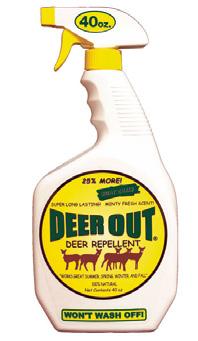


GardenerNews.com 24 June 2023 18 Hamilton Rd., Hillsborough, NJ 08844 (908) 359-4652 • CentralJerseyNurseries.com GARDEN CENTER HARDWARE LANDSCAPE MATERIALS NURSERY STOCK POWER EQUIPMENT A better garden starts with a better plant. Proven Winners Container Gardens Shrubs Vegetable Plants Annuals Perennials We've Got It All! Magni cant Hanging Baskets in All Colors *CALL AHEAD FOR HOURS All Grown in our Family Owned Greenhouses since 1946 A better garden starts with a better plant. Proven Winners Container Gardens Shrubs Vegetable Plants Annuals Perennials We've Got It All! Magni cant Hanging Baskets in All Colors Read The Gardener News Online GardenerNews.com
The Pennsylvania Horticultural Society has selected six new plants as part of its Gold Medal Plant Program for 2023. All six plants are native perennials, shrubs and trees. Gold Medal Plants are selected for ornamental attributes; they can be found in local garden centers; are relatively easy to cultivate; and support a host of ecological functions.
Spigelia marilandica has tubular red flowers with yellow tips at the end of spring into the early summer. It can be grown in full sun, but also thrives in full shade. It attracts the Ruby-throat Hummingbird to the garden. This clumpforming perennial will expand over time. Once established, it can also spread by seeding around in the garden. Reaching two feet tall at maturity, it is also fits nicely into a relatively small garden.
Vernonia lettermannii
‘Iron Butterfly’ is a new selection of the native ironweeds. This relative of the asters is covered with vivid purple flowers in later summer to early fall. It is a great late season pollinator plant. Reaching about 18 inches tall, this clumping perennial can be grown as a single specimen, but looks great when planted in masses where it combines
Pennsylvania Horticultural Society
By Andrew Bunting Vice President of Horticulture

Gold Medal Plants
attractively with native grasses such as the switch grass, Panicum virgatum , and the prairie dropseed, Sporobolus heterolepis
‘Iron Butterfly’ has very fine foliage that turns yellow in the fall and brings a fine textural effect to the garden. I grow it in my front garden which gets considerable deer pressure, and while it does get a little browsing it seems to be relatively deer resistant.
Juniperus ‘Grey Owl’
is a broad spreading evergreen shrub that is selected for its silvery blue foliage. Ultimately, it can reach ten feet tall with an equal spread, but it is also relatively easy to keep to a smaller size with regular pruning. It is very tolerant of poor urban soils and can take hot and dry conditions as well. It produces berrylike bluish fleshy cones that are a good food source for native birds. ‘Grey Owl’ is a great addition to the winter
landscape where it can make stunning combinations with winterberry hollies, such as Ilex verticillata ‘Winter Red’ and ‘Winter Gold’.
Viburnum dentatum
Chicago Lustre® is a selection of a native deciduous viburnum, the arrowwood. At maturity, it will reach twelve feet tall with a nearly equal spread. It can be planted as a single specimen, and is good for hedging too. This multiseasoned shrub has flattopped clusters of white flowers in May, which are followed by blue-black berries in the fall that are a great food source. Viburnum dentatum can thrive in full sun to full shade. In the fall, the shiny leaves turn orange, yellow and red. In the wild, it is native from Maine to Florida and west to Texas. The swamp white oak, Quercus bicolor is one of the most versatile and durable of all the native oaks. Because
of its durability, it is used extensively as a street tree where it can thrive in acidic soils, but also those with a high pH. It can grow in degraded urban soils and can tolerate a fair amount of moisture too. Over time it will reach 50-60 feet tall and develop a rounded canopy. Like many species of native oaks, it is the host of hundreds of native species of insects, mammals and birds. The fall color is yellow. Nyssa sylvatica Green Gable™ is a selection of the sour gum or tupelo. Reaching 60 feet tall at maturity, it will develop a broad pyramidal shape. Like other Nyssa cultivars and selections, it is tolerant of all sorts of soils, including poorly drained soils, making it a great candidate to be used in urban areas and as a street tree. The fall color is a stunning fire engine red and it is one of the earlier trees to exhibit fall color.
In the fall the small fruits turn black-blue and are the favorite food of many native song birds including the American Robin.
These new Gold Medal introductions join over 150 Gold Medal Plants that have been selected for adaptability and outstanding ornamental attributes.
Editor’s Note: Andrew Bunting is Vice President of Horticulture for the Pennsylvania Horticultural Society. He is one of the most recognized horticulturists in the Philadelphia, Pa., region and a highly regarded colleague in the world of professional horticulture. Bunting has amassed a plethora of awards, including the American Public Gardens Association Professional Citation, Chanticleer Scholarship in Professional Development, Delaware Center for Horticulture’s Marion Marsh Award, and the Certificate of Merit from the Pennsylvania Horticultural Society. In addition, Bunting has lectured extensively throughout North America and Europe, and participated in plant expeditions throughout Asia and Africa. Learn more at https://phsonline.org/team/ andrew-bunting
The Power of Pollinators
(Continued from page 1)
right up to eye level, making them easier to observe.
Without pollinators, ecosystems are less resilient due to biodiversity losses, increases in invasive species, and reductions in crops and natural vegetation.
In order to protect pollinators like the monarch butterfly, in 2007 the United States Senate designated a National Pollinator Week to help remind us how important it is to take action to protect and enable pollinators and their work.
This year’s National Pollinator Week is June 19th-25th.
In New Jersey, one week each year shall be designated as “Pollinator Week” which shall fall on the dates designated in the annual proclamation of “National Pollinator Week” by the United States Department of Agriculture, or such other appropriate federal agency, except that if the United States Department of Agriculture, or such other appropriate federal agency, fails
to make such a proclamation by May 31st in any given year, then, in that year, the week beginning on the third Monday in June shall be designated as Pollinator Week.
You can help by creating a pollinator-friendly garden that will support many different native bees, honeybees, butterflies, hummingbirds and others. Start by planting a mix of flowering plants that provide blooms from early spring to late fall. Look to add native plants to your landscape. Grass lawns are deserts for pollinators; consider reducing your lawn footprint by converting part of it to a wildflower or native plant garden. Keep in mind that color is nature’s communication system.
Creating a habitat of multiple plant species will attract a greater diversity of monarch butterflies and other pollinators. The smallest space can be a pollinator garden; with the right plants, even containers on a patio can attract them.
Monarch butterflies help our ecosystem’s
health and help aid in plant reproduction. Any pesticide, organic or synthetic, can harm all pollinators. Please design and maintain your property to make pollinators welcomed guests.
The butterfly has long been recognized as a symbol for transformation. And life is about continuous learning.
Editor’s Note: Tom Castronovo is executive editor and publisher of Gardener News. Tom’s lifelong interest in gardening and passion for agriculture, environmental stewardship, gardening and landscaping, led to the founding of the Gardener News, which germinated in April 2003 and continues to bloom today. He is also dedicated to providing inspiration, and education to the agricultural, gardening, landscaping and nursery communities through this newspaper and GardenerNews.com.
GardenerNews.com June 2023 25
Bobcat Company Recognized by Fast Company’s 2023 World Changing Ideas Awards

Bobcat Company, a global compact equipment, innovation and worksite solutions brand, has been recognized as a winner of Fast Company’s 2023 World Changing Ideas Awards. The World Changing Ideas Awards honor sustainable designs, innovative products, bold social initiatives and other creative projects that are changing the way we work, live, and interact with the world.
The world’s first all-electric compact track loader, the Bobcat T7X, received multiple Fast Company honors as it was selected as the winner of the Transportation category, a finalist in the General Excellence category and honorable mention in the North America category.
The T7X is the first of its kind to eliminate all hydraulic components and emissions. Fully battery powered, the T7X is designed to deliver a smaller carbon footprint and a quieter jobsite experience but was also built to outperform its diesel machine counterparts. This game-changing, totally emissions-free solution is positioned to transform how the world runs jobsites, builds cities and thinks about a sustainable future – all while increasing jobsite power and productivity.
“Innovation is at the core of Bobcat’s legacy. We invented the compact equipment industry 65 years ago with the development of the world’s first compact loader, and we continue to pioneer new products and services to help our customers accomplish more and create a more sustainable world,” said Joel Honeyman, Doosan Bobcat vice president of global innovation. “There is always more work to be done and contributions to make within the industry. This is why Bobcat continues to invent new concepts, create new equipment, build smart technologies and develop innovative solutions to empower customers and lead the industry forward.”
This year’s World Changing Ideas Awards showcase 45 winners, 216 finalists and more than 300 honorable mentions—with health, climate, energy and AI among the most popular categories. A panel of Fast Company editors and reporters selected winners and finalists from a pool of more than 2,200 entries across urban design, education, nature, politics, technology, corporate social responsibility and more. The 2023 awards feature entries from across the globe, from Italy to Singapore to New Zealand.
“It’s thrilling to see the creativity and innovation that are so abundant among this year’s honorees,” says Fast Company editor-in-chief Brendan Vaughan. “While it’s easy to feel discouraged by the state of the world, the entrepreneurs, companies, and nonprofits featured in this package show the limitless potential to address society’s most urgent problems. Our journalists have highlighted some of the most exciting and impactful work being done today—from housing to equity to sustainability—and we look forward to seeing not only how these projects evolve but how they inspire others to develop solutions of their own.”
Since 1958, Bobcat Company has been empowering people to accomplish more. As a leading global manufacturer of compact equipment, Bobcat has a proud legacy of innovation and a reputation based on delivering smart solutions to customers’ toughest challenges. Backed by the support of a worldwide network of independent dealers and distributors, Bobcat offers an extensive line of compact equipment, including loaders, excavators, compact tractors, utility products, telehandlers, mowers, attachments, implements, parts, and services. Headquartered in West Fargo, North Dakota, Bobcat continues to lead the industry, all while helping people succeed and build stronger communities and a better tomorrow.
Tom Castronovo
Todd Pretz
Gail Woolcott
Andrew Bunting
June 2023 Columnists
Brian Schilling
Peter Melick
Bob Andrzejczak
Douglas H. Fisher
Bruce Crawford
Andy Lagana Lesley Parness
June 2023 Contributing Writer


Hubert Ling
The
NOTE:
GardenerNews.com 26 June 2023
Gardening Monthly
Monthly
Staff
News is published monthly by Gardener News, Inc.
Mount Bethel
#123
07059
The Premier
Newspaper Number 242 Published
RESERVE AD SPACE Website: www.GardenerNews.com E-Mail: Mail@GardenerNews.com
Executive Editor/Publisher ..... Tom Castronovo Art Director ................. Susan F. Kessel Advertising .................. Tom Castronovo Gardener
16
Road
Warren, NJ
Gardener News invites correspondences on gardening subjects of interest. Gardener News, Inc, and its Publisher reserve the right to accept, refuse, or discontinue any editorial or copy, and shall not be liable to anyone for printing errors, misinformation or omissions in editorial or copy. The information contained in articles herein represents the opinions of the authors and, although believed to be accurate and complete, is not represented or warranted by Gardener News, Inc. to be accurate or complete.
All advertising is subject to the Gardener News advertisement rates, and must be PAID IN FULL at time of submission. Publisher reserves the right at its absolute discretion, and at any time, to cancel any advertising order or reject any advertising copy whether or not the same has already been acknowledged and/or previously published. In the event of errors or omissions of any advertisement(s), the newspapers liability shall not exceed a refund of amounts paid for the advertisement.
of Gardener News, Inc. and may not be reproduced in any form unless written authorization is obtained from the publisher. POSTMASTER: Send all address changes to: Gardener News, 16 Mount Bethel Rd - #123, Warren, NJ 07059. (c) 2023 Gardener News, Inc.
All editorial, advertising layouts and designs and portions of the same that are produced and published by Gardener News, Inc., are the sole property
Advertise in the Gardener News Please visit www.GardenerNews.com and click on the Advertising Link in the center of the Navigation Bar to view our Media Kit. We can be contacted through our Contact Us Form, also on the Navigation Bar. Thank you!
June
2023 Eastern Daylight Savings
Full Moon
3,




GardenerNews.com June 2023 27 of Nort h Jersey Bobcat of North Jersey 201 MALTESE DRIVE TOTOWA , NJ (973) 774-9500 http://www.njbobcat.com Bobcat , the Bobcat logo and the colors of the Bobcat machine are registered trademarks of Bobcat Company in the United States and various other countries. ©2021 Bobcat Company. All rights reserved. 14520937 Bo B cat .com/Large e xcavators When your work calls for big performance and productivity for difficult jobs, step into new large excavators from Bobcat. Sometimes, bigger challenges demand a bigger excavator. New Bobcat ® large excavators will measure up and then some. Available 201 Maltese Drive, Totowa, NJ www.njbobcat.com • (973) 774-9500 Proudly Supporting the Entire New Jersey Agricultural, Gardening, Landscaping and Nursery Communities. A Proud Sponsor of the SEE EQUIPMENT! TOUCH EQUIPMENT! OPERATE EQUIPMENT! TRY US OUT AT THE SHOW! Save the Date Wednesday, August 2, 2023 Visit NJCSE.com for Show Information THE T86 LOADER • Performance to Make you More Precise and Productive • Versatility to Fit More Tasks • Premium Comfort and Ease of Use Bobcat® T86 compact track loaders set new standards for productivity, attachment versatility, speed, control and weight-to-horsepower ratios. Considering an equipment purchase in the future? Purchasing or leasing Bobcat equipment may be more affordable than you think. INTRODUCING
REVOLUTION
HANDHELD PRODUCTS
GRANDSTAND®
STAND-ON MOWERS

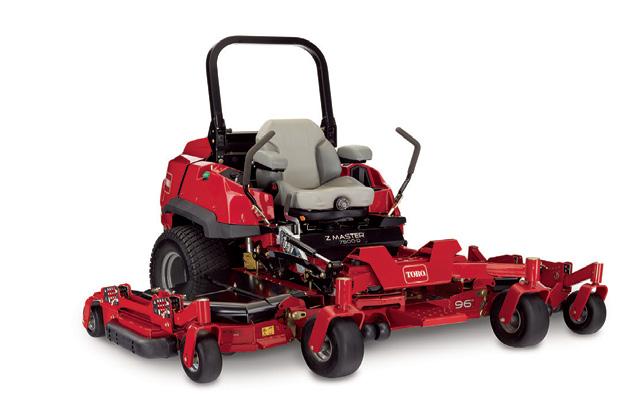

Z MASTER
7500-G SERIES ZERO-TURN
PRODUCTIVITY TO A NEW LEVEL Impressive 96” wide cutting deck folds to 75” to fit in most trailers. Vented hood keeps the engine cool with direct air induction from the top. Comes standard with Horizon Technology to help choose the right operating mode for mowing conditions.

ALL DAY PERFORMANCE
The fully interchangeable 60V Max* Flex-Force battery system powers the entire line of Revolution commercial grade handheld tools. The backpack, available as a power source for the leaf blower, string and hedge trimmers, and is built for comfort and ready to keep jobs moving all day.

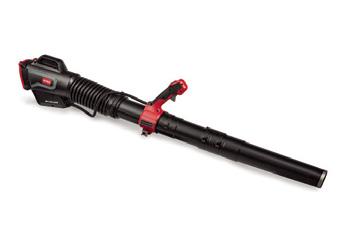


TRACTION & HANDLING
A wide stance and optimal balance enhance hillside stability and control.
CUSHIONED SUSPENSION
36”-72” TURBO FORCE ® CUTTING DECKS 96” TURBO FORCE ® CUTTING DECKS
Flex-Ride operator platform suspension self-compensates for operators of all sizes, resulting in less fatigue and higher productivity throughout the day.
GRANDSTAND®
MULTI FORCE™
WITH MULCH DUMP
ALL-SEASON USE
A variety of attachments and accessories such as Mulch Dump, Pro-Force blower, snow thrower, power broom, tine rake, dethatcher and BOSS snow blade all provide the ultimate in productivity.
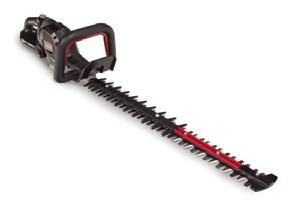
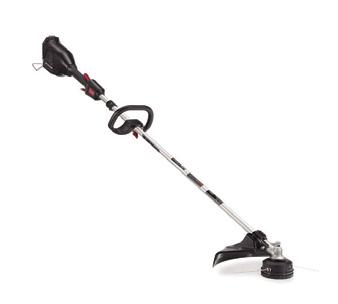


PROLINE™
36”-60” CUTTING DECKS
NO-HASSLE SULKY
2-wheel sulky rotates 360º and folds away when not in use; no need to remove for trailering!

Reliable

GardenerNews.com 28 June 2023
See your local servicing Toro dealer at Toro.com/local
MID-SIZE MOWERS
MOWING MUSCLE
Kawasaki engines drive .204” blades for a gorgeous, professional cut.
SPRAYMASTER®
Dual Smart Hour Meters and Lean-to-Steer Provide Precision Dispersement White Tanks Simplify Fuel Level Monitoring TURFMASTER® HDX 30” WIDE AREA WALK POWER MOWER Commercial-Grade Kawasaki® Engine Larger, More Powerful Kohler Engine Available Spin-On Oil Filter & Dual Element Air Filter CHARGED BY R EV OLUTION COMPLETE LINEUP INCLUDES GrandStand Stand-On Mowers Z Master Zero Turn Mowers 60V Heavy-Duty 21” Walk Behinds 60V Commercial Handheld Tools NEW! ALL ELECTRIC. ALL DAY POWER. Learn more at Toro.com/revolution
STAND-ON TURF RENOVATION




































































































